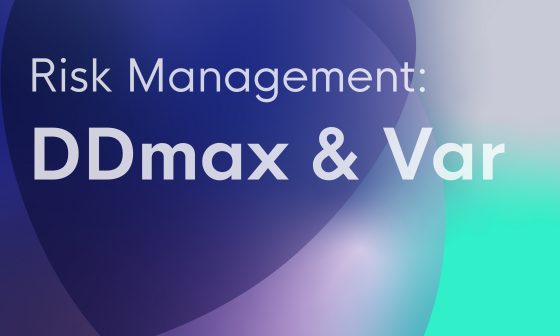China is already testing its “digital yuan,” with the USA, Great Britain, France, South Korea and other countries working on similar steps, too. Already 20% of 66 central banks stated that they are likely to issue a digital currency within the next six years. Christine Lagarde, the president of the European Central Bank (ECB) “The ECB is looking ‘very seriously’ at the creation of a digital euro”. A Central Bank Digital Currency (CBDC) is a digital asset inspired by a cryptocurrency, but unlike cryptocurrencies, a CBDC is issued by the Central Bank and is subject to the corresponding laws. We can define it as a digital representation of the currency of a country.
This has clearly illustrated that crypto currencies were way ahead of their time and has led to the ECB and successive governments playing catch up. However, the ECB fired back saying:
“Crypto-assets are fundamentally different from ECB money: their prices are volatile because they lack any intrinsic value and there is no reliable institution backing them. People using a digital euro would have the same level of confidence as with cash, since they are both backed by a central bank, which is something crypto-assets such as stable coins cannot provide.” (Source)
The digital Euro
Irrespective, all digital currencies will be piggy backing the technological innovation of crypto currencies and the ECB has already announced the launch of a digital euro could be on the cards. The project, still in a testing phase, will include blockchain technology to the traditional euro. The digital euro will thus seek to compete with cryptocurrencies such as Bitcoin or Ethereum, as well as many other digital currency projects. Bolstering the legitimacy of crypto currencies in the global financial markets.
Although the president of the ECB has wanted to make it clear that “a digital euro will only be a ‘supplement’ to cash, and would never replace it,” the truth is that the digital euro bears testament to the prowess and sustainability of the crypto market. In addition, the emergence of the covid-19 pandemic has caused an accelerated growth in online purchases and credit card payments. “e-commerce rose by almost one fifth in terms of volume and size between February and June 2020 due to the pandemic,” (Source)
In addition to online purchases, “Digital payments have increased significantly as a result, particularly in countries such as Germany and Italy where ‘cash was king’”, (Source) In this context, the digital euro is an important asset for the ECB, which seeks to compete with cryptocurrencies and their multiple benefits for companies and consumers.
Advantages of the digital euro
Keeping up with the Jones’s
The European Union expressed in no uncertain terms that it needs to keep up with digitalization and the rewards that crypto currencies offer. In their statement, it seems clear that the antiquated system leaves a lot to be desired and revolutionizing is necessary, in their own words:
“The digital euro should keep pace with state-of-the-art technology at all times in order to best address the needs of the market as regards, among other attributes, usability, convenience, speed, cost efficiency and programmability. It should be made available through standard interoperable front-end solutions throughout the entire euro area and should be interoperable with private payment solutions.” (Source)
Immediate international transfers
Online commerce has been losing many opportunities for a long time due to the delay of international transfers. In the best of cases, money arrives a day or two late from issuance, which can be a problem for some businesses. After the introduction of the digital euro, payments can be made instantly and securely, which will place the European currency at the level of cryptocurrencies such as Bitcoin or Ethereum.
Security against tax fraud
Finally, the appearance of the digital euro and the consequent progressive disappearance of cash could have very positive effects for the economy. One of them has to do with tax fraud, since the traceability of operations through blockchain would close the door to unscrupulous businesses that collect VAT and do not remit it to the government. Crucially, the current VAT regime exposes EU countries to an unacceptable and damaging level of VAT fraud. Revenue losses from this type of fraud are estimated at around €50 billion annually in the EU.(Source)
Conclusion
A digital euro would be an electronic version of euro banknotes and coins, being legal tender and guaranteed by the European Central Bank. Like cash, money could be stored outside of the banking system, such as in a digital wallet. It would allow citizens and companies to make their daily payments in a fast, easy and secure way. The issuance and transfer of digital euros could be done using the distributed ledger. Crypto currencies have brought a lot of advantages to the business sector and to many individuals. This has been accompanied with exponential growth for many of them. The European Union does not want to lag behind China and Russia, and is already in the process of creating a digital euro.
The digital revolution gravitating towards a cashless society is well underway. Pioneering innovations in blockchain technology has caught the eye of many governments and central banks. Seeing how international transfers are made cheap and easy, while tax fraud is made difficult with digital currencies, the ECB is compelled to throw its hat into the ring. The proposed supplement to cash has gained momentum in the crypto currency space so only time will tell how it will affect us if or when it appears in a digital euro manifestation.
Sources:
https://www.ecb.europa.eu/euro/html/digitaleuro.en.html
https://www.reuters.com/article/us-cenbanks-digital-idUSKBN1ZM2HK
https://www.ecb.europa.eu/pub/pdf/other/Report_on_a_digital_euro~4d7268b458.en.pdf
https://ec.europa.eu/commission/presscorner/detail/cs/MEMO_17_3444







